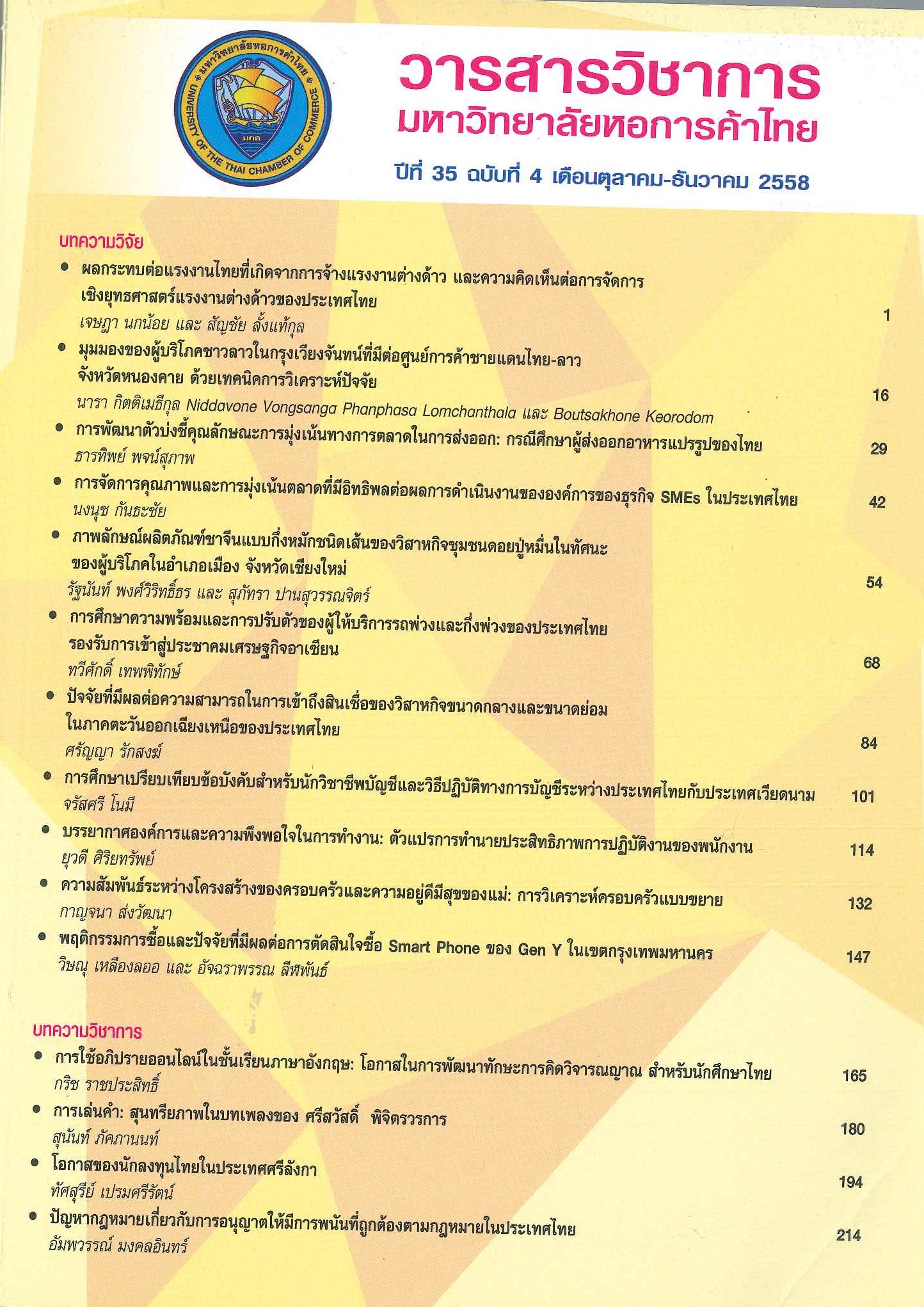The Relationship between Family Structure and Maternal Well-being: An Analysis of a Multigenerational Family
Main Article Content
Abstract
The increasing divorce rate has resulted in a rise in the number of single mother families. This study aimed to examine the relationship between family structure and level of maternal well-being, especially with regard to the role of multigenerational families on maternal well-being. This study used an in-depth interview with the sample size of 210 mothers in Bangkok province. Using both ordinary least square regression and logistic regression, the results found that women who live in multigenerational families could increase their levels of well-being by reducing their levels of parental aggravation. Hence, policies that support multigenerational families should be promoted in order to reduce mother burdens and improve the family relationship, which is a good start for a sustainable society.
Article Details
ลิขสิทธิ์ของบทความ
ผลงานที่ได้รับการตีพิมพ์ถือเป็นลิขสิทธิ์ของมหาวิทยาลัยหอการค้าไทย ห้ามมิให้นำเนื้อหา ทัศนะ หรือข้อคิดเห็นใด ๆ ของผลงานไปทำซ้ำ ดัดแปลง หรือเผยแพร่ ไม่ว่าทั้งหมดหรือบางส่วนโดยไม่ได้รับอนุญาตเป็นลายลักษณ์อักษรจากมหาวิทยาลัยหอการค้าไทยก่อน
References
Aquilino, W.S. 1996. "The Life Course of Children Born to Unmarried Mothers: Childhood Living.” Journal of Marriage and Family 58, 2: 293-310.
Bengston, V.L. 2001. "Beyond the Nuclear Family: The Increasing Importance of Multigernational Bonds.” Journal of Marriage and Family 63, 1: 1-16.
Blau, P.M. 1964. Exchange and Power in Social Life. New York: Wiley.
Channuwong, S. 2014. "Buddhist Approaches to Managing Stress and Improving Mental Health.” University of the Thai Chamber of Commerce Journal 34, 2: 1-17. (in Thai).
สุขุมพงษ์ ชาญนุวงศ์. 2557. "พุทธวิธีบริหารจัดการความเครียดและเสริมสร้างสุขภาพจิต." วารสารวิชาการ มหาวิทยาลัยหอการค้าไทย 34, 2: 1-17.
Hamilton, B., Martin, J., and Sutton, P. 2004). "Births: Preliminary Data.” Natural Vital Statistics Report 53, 9: 1-17.
Lichter, D.T. 1997. "Poverty and Inequality Among Children.” Annual Review of Sociology 23 121-145.
Ross, C.E., Mirowsky, J., and Goldsteen, K. 1990. "The Impact of the Family on Health: The Decade in Review.” Journal of Marriage and Family 52,4: 1059-1078.
Seltzer, J.A. 2000. "Families Formed Outside of Marriage.” Journal of Marriage and the Family 62, 4: 1247-1268.
Steil, J.M. 2001. "Family Forms and Member Well-being: A Research Agenda for the Decade of Behavior.” Psychology of Woman Quarterly 25,4: 344-363.
Thibaut, J.W., and Kelly, H. H. 1959. The Social Psychology of Groups. New York: Wiley.
Waite, L., and Gallagher, M. 2000. The Case of Marriage: Why Married People are Happier, Healthier, and Better Off Financial. New York: Double Day.
Waldron, I.C., Weiss, C.C., and Hughs, M.E. 1998. "Interacting Effects of Multiple Roles on Woman’s Health.” Journal of Health and Social Behavior 39, 3: 216-236.
Wurzel, J.S., and Fischman, N.K. 1995. A Different Place: The lntercultural Classroom. Newtonvile, MA Intercultural Resource.

